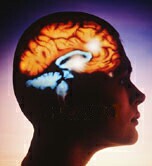
WEDNESDAY, Feb. 9 (HealthDay News) — Older Americans are suffering fewer strokes, but new government research shows that stroke hospitalizations are sharply rising among children and younger adults, especially for men under 35.
Although the study doesn’t explore the reasons for the trend, experts point to the obesity epidemic, increasing rates of diabetes and high blood pressure as likely culprits.
Recreational drugs may play a role as well, they added.
“Young people should see their doctor for regular checkups,” said Dr. Brett Kissela, a professor of neurology at the University of Cincinnati Neuroscience Institute, who has conducted previous research on strokes but was not involved with this study. Routine check-ups can help control risk factors for stroke, such as high blood pressure, he explained.
Dr. Mary George, a researcher with the U.S. Centers for Disease Control and Prevention, is scheduled to report the findings Wednesday at the International Stroke Conference in Los Angeles.
Experts note that research presented at meetings typically has not been subjected to the same scrutiny as studies published in peer-reviewed medical journals.
For the study, CDC researchers examined hospitalization data for the period from 1994 to 2007 from the Nationwide Inpatient Sample, identifying patients with a primary diagnosis of ischemic stroke. Ischemic stroke, which occurs when a blood clot or clogged artery blocks the blood supply to the brain, is more common than hemorrhagic stroke, the result of a ruptured blood vessel.
The increases and decreases in stroke rates varied by gender and age group, the researchers found.
Among males aged 15 to 34, the rate surged by nearly 51 percent. Among females in that age group, it increased 17 percent. Strokes soared 31 percent in boys aged 5 to 14 and 36 percent in girls of the same age.
Men between 35 and 44 years old had a 47 percent increase in stroke incidence. For women in that age range, stroke incidence rose 36 percent.
For older adults, the news was better. Stroke rates declined 12 percent in men 45 to 64 years old and 13 percent in women in that age range. The rates went down even further for 65-plus men and women: 25 percent in men and 28 percent in women.
“This study doesn’t really address what is underlying these trends, and that needs to be looked at,” George said. However, she said more awareness, and better detection, of strokes on the part of doctors may help explain the escalation in some age groups.
The findings echo those presented at last year’s conference by Kissela. His research found that the average age of a stroke patient decreased by nearly three years between 1993-1994 and 2005. He also found stroke on the rise among young adults.
His study was regional, looking at residents of Ohio and Kentucky, while the CDC study was national in scope. “It is confirming what we are seeing locally,” he said of the latest research.
His study did not examine reasons for the trend either, but he speculated that the unhealthy eating habits and sedentary lifestyles that cause obesity and diabetes may be fueling strokes among younger people. Use of illegal drugs such as cocaine may also contribute to the upswing, he said.
More information
To learn more about stroke, visit the American Stroke Association.

